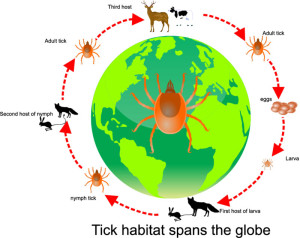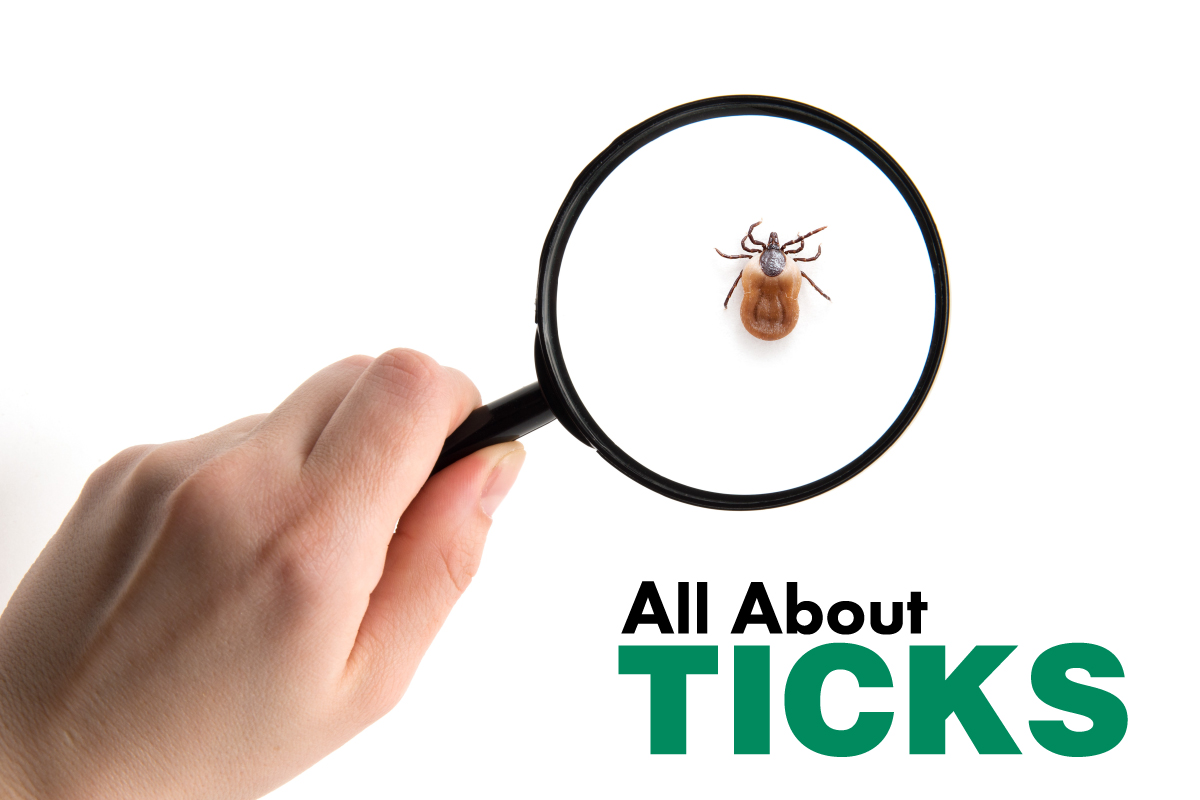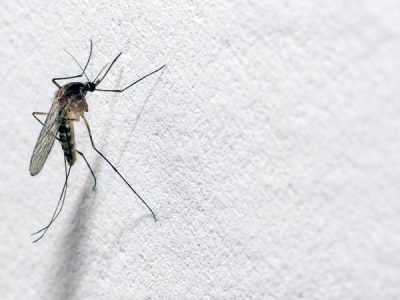Now that the warmer days of spring are here you may notice that there are more ticks jumping around in your garden or in the bush if you’re out walking.
In general, most ticks don’t cause problems for humans, but if bitten by a Paralysis Tick then there is a chance of mild to severe allergic reactions, and perhaps paralysis in young children, but bites are rarely fatal with the advent of modern antitoxins. Pets can also suffer, especially dogs and cats, if they are bitten by the Paralysis Tick.
There are 75 known species of tick in Australia, and they typically thrive in areas that have moist, humid rainforests, like NSW and Queensland. Ticks fall into two types, hard (ixodidae) and soft (argasidae). Hard ticks such as the Paralysis Tick cause the most concern as it is found on the east coast of Australia where most people live. The saliva of the Paralysis Tick has a neurotoxin that can cause paralysis and death to dogs and cats.
The lifecycle of the tick has four stages and requires three feeds of blood.
 Eggs are laid by the adult tick.
Eggs are laid by the adult tick.- The eggs hatch into larvae.
- The larvae change into a nymph.
- The nymph changes into an adult.
A female tick can lay up to 3,000 eggs, and these will hatch into larvae between one to two months. Larvae then need a blood meal from a host to change into nymphs.The nymphs also need a blood meal to change into adults. A third blood meal is needed for the tick to mate and lay eggs. After this the tick dies, with the whole lifecycle taking around a year. Spring and summer are peak seasons for ticks as this is when adults seek out hosts.
Common hosts for ticks are cats, dogs, echidnas and possums, and on occasion, humans, and there are some known health risks associated with ticks. Symptoms to look out for if you suspect someone has been bitten by a tick include:
- dizziness
- unsteadiness on feet
- nausea
- headache
- rashes,
- weak limbs
- fever
- tender lymph nodes.
Allergic reactions to tick bites are common, and the site of the bite can become swollen, itchy and inflamed for up to 10 days. The method for tick removal as per the St John Ambulance Australia First Aid Manual is as follows:
- Administer standard first aid management (DRABCD).
- Remove tick using fine-tipped forceps or equivalent, press skin down around tick’s embedded mouth part.
- Grip the mouth firmly, gently lift to detach the tick – do not squeeze with fingers or forceps during removal.
- If severe allergic reaction: call 000 for an ambulance.
For pets, the symptoms include:
 wobbly back legs
wobbly back legs- unsteady on their fee
- change in tone of bark
- off their food
- vomiting or dry retching
- excessive saliva
- coughing
- noisy panting.
Contact your local vet immediately if you think your pet has tick poisoning.
If you know certain areas are tick infested then avoid these if participating in outdoor activities. If you must, then wear long sleeves and long pants to provide protection against tick bites, and apply insect repellant containing DEET. Bring a first aid kit with tweezers and disinfectants to provide immediate assistance with removing the tick as per the above instructions.




